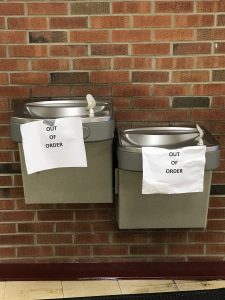
During the spring of 2014, I sat in on a committee of math teachers to select our district’s new math books. Publishers all pointed to their text’s alignment to the Common Core, touting changes made to adapt to the Core. One book had supposedly been designed from scratch around the Core. We went over each text carefully, discussing pros and cons. We were down to two books at the end, containing virtually identical content, and chose the book that was significantly easier to read. The easier read text even contained a few mathematical concepts the other book did not – all aligned to Common Core standards. The then-assistant superintendent ignored our recommendations and chose the “more demanding” book, announcing, “This book has the rigor we need.”
That “rigor” translated to page after page of unreadable story problems set four years above the average reading/math level of many of my students, according to their MAP benchmark test results. The time I lost explaining what story problems meant was not exactly wasted, but I’d call that time a poor use of a math class. I ended up keeping the books mostly on the shelf. While I was told to use the materials provided me, an unreadable text does not work nearly as well as a PowerPoint that students can understand. In my opinion, we could have used our book money more effectively by buying cheese sticks and granola bars to help hungry students stay awake and concentrate in class. We might not have done worse by buying a box of shiny fidget spinners instead.
The problem of READABILITY too often falls off the table lately. This problem worsened dramatically when the Common Core moved onto center stage across America, and has not abated as the Core weakens. Ironically, desperate districts that most need readable books have ended up purchasing texts set years above their average students’ reading levels because those texts were written to match the Common Core standards for pupils’ official grade levels. Using the official-grade strategy, stronger students receive books or software that suit their interests and abilities, or even books that are excessively easy, while weaker students get materials only slightly easier to read than ancient Greek epic poems or Klingon technical manuals.
How does this happen? The cost of texts and software contributes to the silence. If administrators believed readable, affordable materials with the potential to boost test scores were out there, more districts might focus on the issue, but readable books have become background noise as school leaders try to find a cheap, magic formula to rescue schools’ test numbers. Fixed on score results, these leaders purchase test-aligned books or software with little or no consideration of readability. The choice that matches the test ends up being the choice used, whether the test forcing the choice is appropriate or not.
Teachers then begin doing damage control. Even now, many thousands of teachers across the United States are trying to make or find alternative materials to bridge the gap between their low-readers and an intimidating textbook or software package. Unfortunately, making and finding these materials takes time, and too many meetings, and required data spreadsheets can eat this time, until nothing is left except a quick trip to TeachersPayTeachers and maybe a Hail Mary and a prayer.
Why did I retire? I was used to unreadable books in my bilingual classes. I was used to daily meetings sucking up all my tutoring time. I was used to test, test, testing. I was always preparing spreadsheets that showed AGAIN the same thing the last few spreadsheets had shown. What made me call the state of Illinois to begin my retirement process then?
Finally I lost so much control of my time and process that I could not correct the craziness. During my last year, I had to be on the common daily lesson plan or the administration — seriously — threatened to fire me. If everybody was teaching a certain standard, I was expected to be teaching that standard — even if some of my math students were documented to be four or more years behind that standard. I was not allowed to prepare or buy the independent PowerPoint that might fill in the linguistic and conceptual gaps I had uncovered. I had to be teaching “X,” not “Y,” and while theoretically I was allowed 20 minutes of time for remediation during my extended math block, I always had to justify myself if caught actually remediating.
Maybe “justify” is too gentle of a verb. In truth, if I strayed from the common lesson plan, I got grilled and then sometimes chastised. “No excuses,” my Assistant Principal would say. A student’s being five years behind the curriculum was no excuse for not trying to force that incomprehensible curriculum down the poor kid’s throat.
Eduhonesty: I loved my kids. I loved teaching. And I could not teach without living in fear of somehow being “caught” doing just that. I hated being treated like my student’s struggles were somehow my fault. And, damn, was I sick of making useless spreadsheets to provide fodder for useless discussions that stole what little tutoring time I might have used to rescue a few of those kids. So I contacted the state to begin my retirement paperwork. In the last few years, many colleagues have quit sooner than they had intended as well.
I loved my kids, so I had to go.




